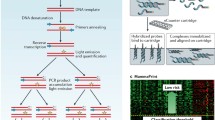Opinion statement
We now recognize that all breast cancers are not the same. Different characteristics in gene expression profiles result in differential clinical behavior. With the use of gene microarrays, different subtypes of breast cancer have been characterized. The basal subtype is characterized by high expression of keratins 5 and 17, laminin, and fatty acid-binding protein 7. The ERBB2+ subtype is characterized by high expression of genes in the ERBB2 amplicon. The luminal A subtype is characterized by the highest expression of the ER α gene. The luminal B and C subtypes have a lower expression of the ER cluster. The importance of these different subtypes lies in the fact that they differ in clinical outcome, with the basal and ERBB2+ subtypes having the worse prognosis and the luminal A group having the best prognosis. Different strategies for evaluating tumors in a clinical setting have been developed. Two such strategies are the 21-gene assay (Oncotype DX; Genomic Health, Redwood City, CA), which is currently in commercial use in the United States, and the 70-gene assay, which has been developed by a group in the Netherlands. These assays have been shown to predict clinical outcome and response to therapy. However, to date these gene assays have not been studied in a prospective manner. Over the next year, prospective clinical trials will be initiated using these predictive tools in the treatment of breast cancer. In the near future, clinical decisions will most likely be dictated by the genetic characteristics of the tumor, with the clinical characteristics becoming less important. Tailoring our treatment based on individual tumor characteristics will help us develop better therapeutic strategies and save many patients from receiving unnecessary toxic therapy.
Similar content being viewed by others
References and Recommended Reading
Early Breast Cancer Trialists’ Collaborative Group (EBCTCG): Effects of chemotherapy and hormonal therapy for early breast cancer on recurrence and 15-year survival: an overview of the randomised trials. Lancet 2005, 365:1687–1717.
Esteban JM, Baker JB, Cronin M, et al.: Tumor gene expression and prognosis in breast cancer: multi-gene RT-PCR assay of paraffin-embedded tissue. Proc Am Soc Clin Oncol 2003, 22:850.
Fisher B, Costantino J, Redmond C, et al.: A randomized clinical trial evaluating tamoxifen in the treatment of patients with node-negative breast cancer who have estrogen-receptor-positive tumors. N Engl J Med 1989, 320:479–484.
Perou CM, Sorlie T, Eisen MB, et al.: Molecular portraits of human breast tumours. Nature 2000, 406:747–752. This is the first report on tissue microarrays in breast cancer and the occurrence of different subtypes.
Sorlie T, Perou CM, Tibshirani R, et al.: Gene expression patterns of breast carcinomas distinguish tumor subclasses with clinical implications. Proc Natl Acad Sci U S A 2001, 98:10869–10874. In this article, the authors further subclassify breast cancers into different subtypes according to tissue microarray data.
Paik S, Shak S, Tang G, et al.: Multi-gene RT-PCR assay for predicting recurrence in node negative breast cancer patients-NSABP studies B-20 and B-14. Breast Cancer Res Treat 2003, 82:A16.
Cronin M, Pho M, Dutta D, et al.: Measurement of gene expression in archival paraffin-embedded tissues: development and performance of a 92-gene reverse transcriptase-polymerase chain reaction assay. Am J Pathol 2004, 164:35–42.
van de Vijver MJ, He YD, van ’t Veer LJ, et al.: A gene-expression signature as a predictor of survival in breast cancer. N Engl J Med 2002, 347:1999–2009.
Rouzier R, Anderson K, Hess KR, et al.: Basal and luminal types of breast cancer defined by gene expression patterns respond differently to neoadjuvant chemotherapy [abstract 201]. Breast Cancer Res Treat 2004, 88(Suppl 1):S24.
Carey LA, Dees EC, Sawyer LR, et al.: The triple negative paradox: primary tumor chemosensitivity of the basal-like breast cancer phenotype [abstract 1023]. Breast Cancer Res Treat 2004, 88(Suppl 1):S48.
Carey LA, Kim NW, Goodman S, et al.: Telomerase activity and prognosis in primary breast cancers. J Clin Oncol 1999, 17:3075–3081.
Simon R: Diagnostic and prognostic prediction using gene expression profiles in high-dimensional microarray data. Br J Cancer 2003, 89:1599–1604.
Cobleigh MA, Bitterman P, Baker JB, et al.: Tumor gene expression predicts distant disease-free survival (DDFS) in breast cancer patients with 10 or more positive nodes: high throughout RT-PCR assay of paraffin-embedded tumor tissues. Proc Am Soc Clin Oncol 2003, 22:850.
PaikS, Shak S, Tang G, et al.: A multigene assay to predict recurrence of tamoxifen-treated, node-negative breast cancer. N Engl J Med 2004, 351:2817–2826. Using molecular profiling in breast cancer, investigators were able to correlate prognosis with a recurrence score derived from the differential gene expression.
van’t Veer LJ, Dai H, van de Vijver MJ, et al.: Gene expression profiling predicts clinical outcome of breast cancer. Nature 2002, 415:530–536. Tissue microarrays are able to predict clinical outcome in breast cancer.
Wang Y, Klijn JG, Zhang Y, et al.: Gene-expression profiles to predict distant metastasis of lymphnode-negative primary breast cancer. Lancet 2005, 365:671–679.
Foekens JA, Atkins D, Sweep CGJ, et al.: Multi-center validation of the 76-gene prognostic signature in lymph node negative primary breast cancer. Breast Cancer Res Treat 2005, 94(Suppl 1):28.
Author information
Authors and Affiliations
Rights and permissions
About this article
Cite this article
Kaklamani, V.G., Gradishar, W.J. Gene expression in breast cancer. Curr. Treat. Options in Oncol. 7, 123–128 (2006). https://doi.org/10.1007/s11864-006-0047-0
Issue Date:
DOI: https://doi.org/10.1007/s11864-006-0047-0




